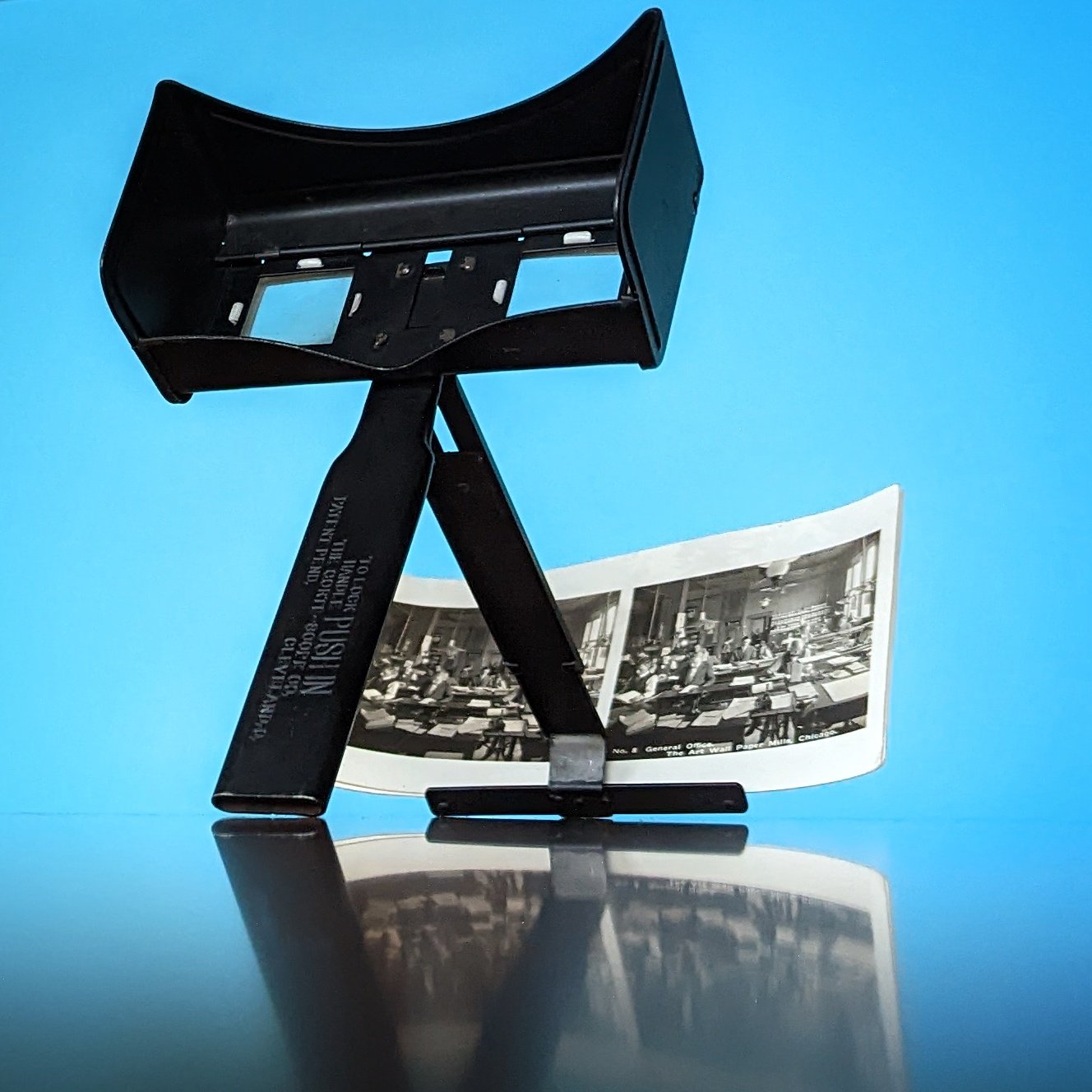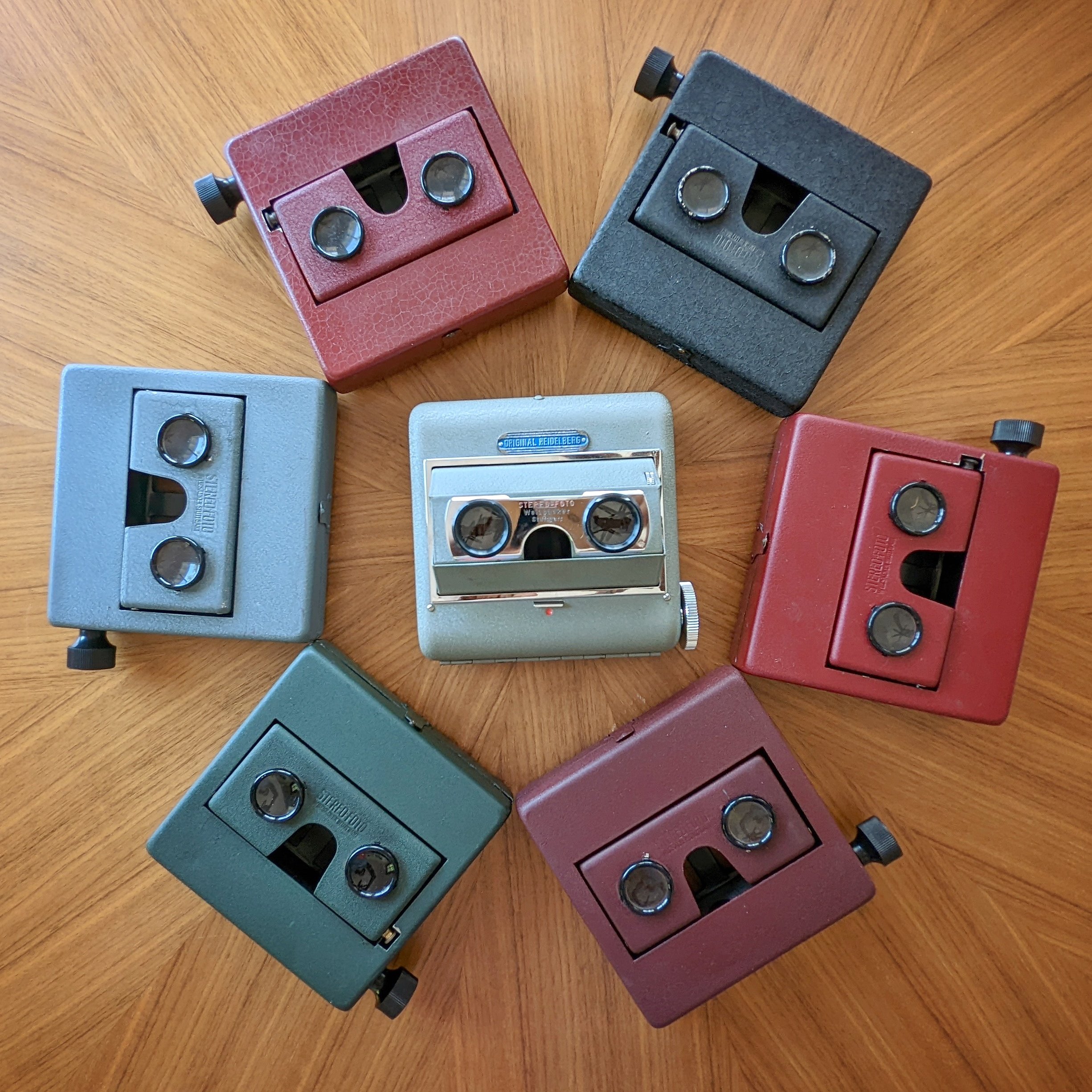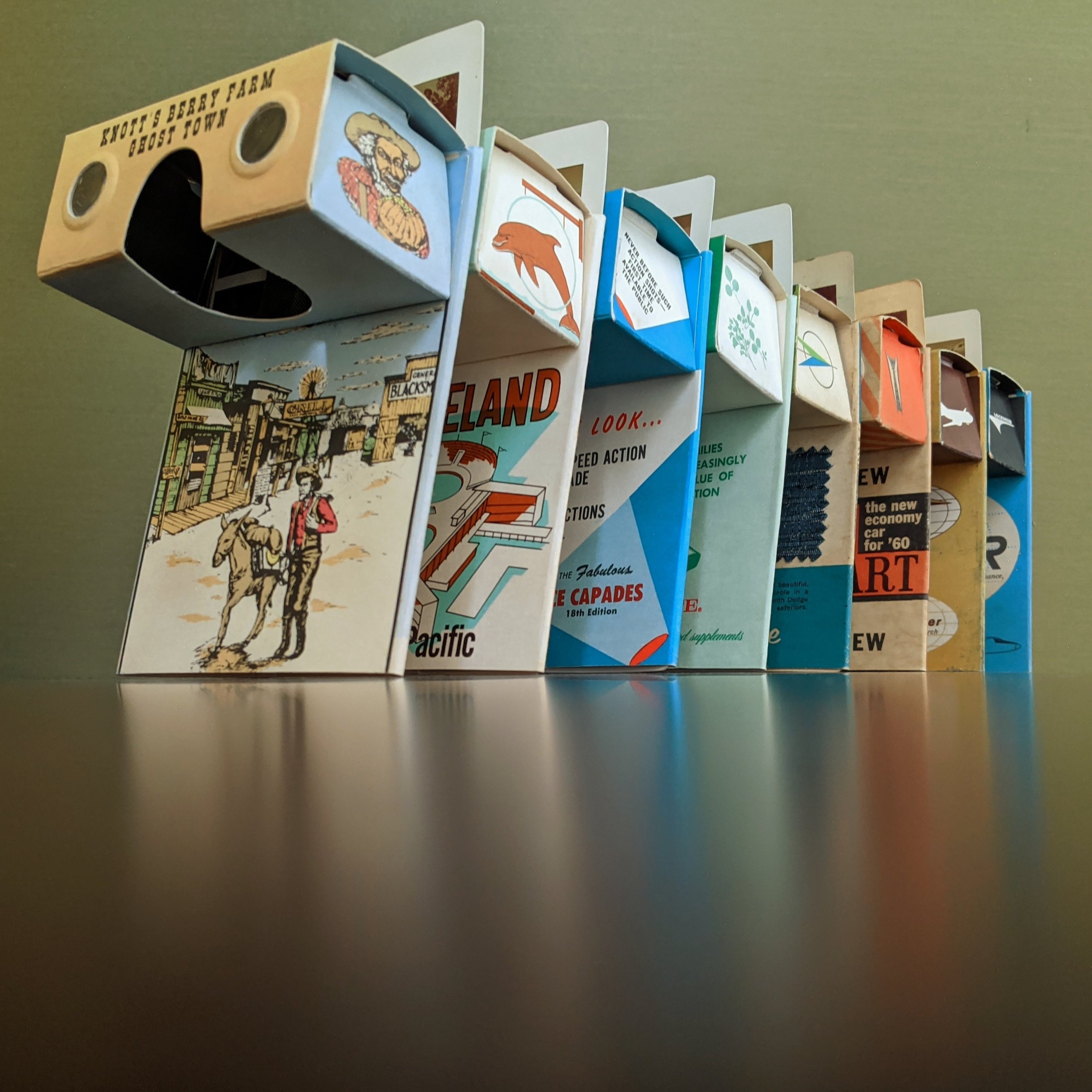Vintage 3D Advertising Systems - Part 1
As we built the Vintage 3D Viewer collection, we noticed that a variety of 3D focus areas (e.g., medicine, war, travel, education, erotica, advertising, toys, etc.) had viewers designed specifically for that focus. We took a big interest in the advertising/marketing angle and built viewer sub-collections around it. We particularly enjoy finding vintage viewers whose first & primary purpose was as a promotional tool and where a significant part of the viewer manufacturer’s business was marketing their viewers and 3D photography services to other businesses.
In this first of a two-part series, we present 7 vintage 3D advertising systems. The amount of the marketing in these systems varies — sometimes it’s just the stereoviews, sometimes it’s just the viewer, and sometimes the whole package is branded: the viewer, the views, and the outer packaging. What’s being promoted ranges from entire factories, to automobiles, to bathroom fixtures, to places like Knott’s Berry Farm, to events like the passing of a Pope. The marketing angle varies also: sometimes the goal is to entice by showing products in life-like 3D, sometimes the goal is to provide a memorable souvenir of a place or event, and sometimes the goal is to keep the customer purchasing items to collect stereoviews.
In a future 2nd part, we’ll discuss the 3D promotional work of Tru-Vue, View-Master, Stori-View, Pan-Pet, Realist, Sterling and Vistascreen.
1900-10: NPG
Produced by Neue Photographische Gesellschaft (NPG), these lithographed tin viewers are so small they’re sometimes listed today as toys. These were not toys — they were promotional items designed to advertise a business and keep customers returning to collect stereoviews. Unlike the other systems shown below, the goal was not to show products in 3D but to attract customers with the novelty of 3D.
1910s: Corte-Scope
From the start, this viewer was specifically designed and marketed as a more convenient and life-like way for salespeople to get products in front of customers, especially large products. The viewer did not have branding on it but a factory’s equipment and products would be photographed in 3D and printed in sets for salespeople to show potential customers.
1920s-30s: Stereo Indupor
The Stereo Indupor stereoscope is usually found packaged as a “Camerascope” for Sunbeam Tours travel stereoviews and for Cavenders Cigarettes “Peeps Into Many Lands” series. But the harder-to-find advertising examples are more exciting to us! Not only were a company’s products & facilities photographed in 3D, in many cases the viewer itself and sometimes the original box were branded as well.
1930s: Pendoplast
There were 2 styles of the Pendoplast stereo viewer and both were used as a way to demonstrate factory facilities. One style is chain-driven and uses a roll of side-by-side stereo images on film. The other uses individual side-by-side transparencies. They offer fascinating glimpses into the 1930s German factory workforce.
1950s: Stereo-foto
Although they were created 20 years later, these colorful metal 3D viewers have the same design and industry marketing purpose as the Pendoplast above. They typically contain 20-30 marketing stereoviews of a factory and its products on a roll of film— sometimes in color! On occasion, the viewer is labeled with the name of the company being advertised but, similar to the Pendoplast, usually there’s no promotional branding on the viewer.
1950s: Taylor Merchant
Taylor-Merchant advertising sets consist of a branded outer vinyl case with a Taylor-Merchant folding cardboard viewer and 6-8 product advertising slides inside.
1950s-60s: Stere-o-card
Cardboard 3D for the win! Ft. Pierce Industries produced a large variety of promotional and souvenir cardboard 3D viewers, covering clients from major automobile manufacturers, airline companies, food industries and amusement park venues. Often, every available surface of the viewer is branded in some way.






